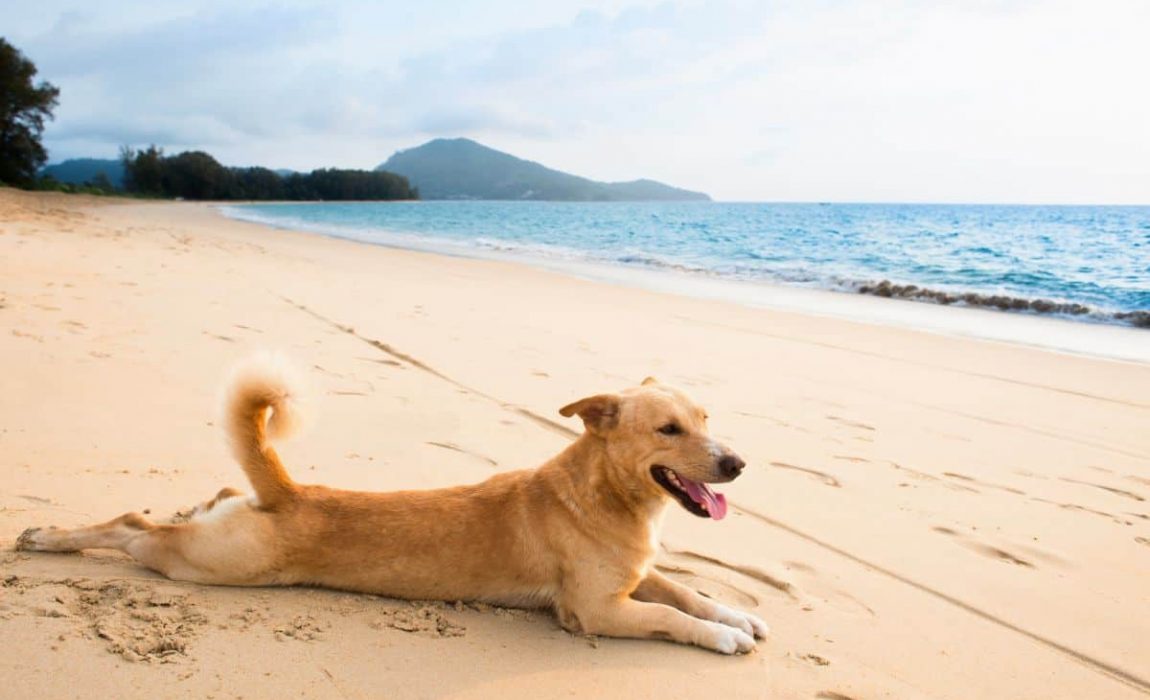As you are likely able to imagine, relocating to a new home let alone an entirely new country can be quite a hassle and headache. Once you manage to find the ideal home or property there is still the very long list of all the other things you must do, prepare, pack, and somehow transport to your new life in paradise without going completely mad. Often times this sensation of being overwhelmed by the thought of moving your life to a new country deters many potential expats from ever actually leaving the comfort of their current life. Now, add your favorite dog or cat into the mix and the headache grows ever stronger as you contemplate just how in the hell you will get Dobson the golden retriever down to the tropics. This chapter will give you the key info you need to get started on the process of preparing your pet for travel into Panama.
First off, always consult with your veterinarian before making a decision to bring your pet to Panama, as older pets may be too stressed to fly long distances, especially if they have to go in cargo and don’t do well alone/in cages. At least 3 months before moving to Panama, check the various airline pet policies on their official websites to determine which airline you will use to get your pet into Panamá. Note that each airline has different rules for how tall a pet carrier can be. Domestic flights have much smaller pet cargo areas so it may be necessary to drive to a town that has a direct international flight to Panama, like Miami or Houston. It will be easier on you and your pet if you have a non-stop flight to Panamá instead of changing planes with long layovers. Some airlines do not allow pets to be flown during certain months, times of day, or holidays so be sure to check the pet policy for the airline to find a date when you are permitted to fly with your pet.
The next step is to make sure your pet is up to date on their shots/vaccinations and schedule a veterinarian appointment to get an international health certificate for your pet. You will need to start this process ten days before you will fly to Panamá to assure that all documents and certificates are still valid upon your arrival into Panamá. Next, you will need to get the international health certificate authenticated by the agriculture department. If you’re a US citizen, that is the USDA. Canadians go to the Canadian Food Inspection Agency. If they have an office near you, it would be a good idea to drive to their office to get the authentication. If there is not an agriculture department office near you, you will need to send the international health certificate to them via Federal Express “next day delivery” and include a return “next day delivery” envelope so they can send it back to you as fast as possible because there is one more step!
Third step: once you get the authenticated international health certificate back from the agriculture department, you will need to get it authenticated by the Panamanian Consulate. If they have an office near you, it is best to drive there to get the authentication. If there is not an office near you, once again, you will need to send the authenticated international health certificate via Federal Express “next day delivery” and include a return “next day delivery” Federal Express envelope so they can send it back to you right away.
Simultaneously, while you are doing what is necessary to get your pet OUT of your country, you will need to do certain things to get your pet INTO Panamá. At least 3 days before you arrive in Panamá, you will need to send in a document requesting a 40-day home quarantine. The home quarantine means your pet can stay on your property (home, condo, etc) in Panamá as opposed to being held at a special animal quarantine facility. The completed “Home Quarantine Request” form has to be emailed cam@minsa.gob.pa. This form must be sent to the Ministry of Health authorities three (03) to five (05) days prior to your arrival in Panama. The fee for the home quarantine is $130 per pet. When you arrive at the airport, your pet must be inspected by a veterinarian. So, it’s important to arrive at the airport when the vets are working which is 8am to 11pm on (non-holiday) weekdays only. If you arrive after hours or when it is a Panamanian holiday, or on the weekend, your pet will be held in a kennel at the airport until the veterinarian office opens again, so do your best to schedule your arrival for the appropriate day and time!
So, in bullet point format:
1. The pet must have an updated Health Certificate (No more than 10 days prior to Panama arrival).
2. The Health Certificate has to be authenticated by your region’s (or federal) agricultural department as well as a Panamanian Consulate within the U.S.
3. Pet should have an updated Rabies Vaccination (not required for puppies).
4. Pet must have Multi Vaccinations (DHLPIPV).
5. The completed “Home Quarantine Request” form must be emailed to cam@minsa.gob.pa. This form must be sent to the Ministry of Health authorities three (03) to five (05) days prior to your arrival in Panama.
6. The Pet should arrive with the record book of vaccinations.
7. Panamanian Veterinarian Authorities must be in the airport when the pet arrives.
8. MIDA import license fee is $16.00 for one pet and $10.00 for each additional pet.
9. Health Ministry “Home Quarantine” costs $130.00 per pet.
10. The Panamanian Authorities offer services Monday through Friday from 8:00 AM to 11:00 PM. They are closed on Saturdays, Sundays and Holidays.
When deciding to bring a pet to Panamá it is important to remember that there will be differences between the life of a pet “back home” compared to in you new chosen location within Panamá. Panama’s warm tropical climate might not be suitable for all breeds. However, if you’re going to be living in one of the country’s more mountainous and cooler regions, bringing your husky along might not be any issue at all! You must also keep in mind that here in Panamá there will be different illnesses, infections, and diseases present and able to affect your animal. This may mean getting a few new vaccines, giving your pet a dose of anti-worm medicine a few times a year, and checking them for ticks more often than usual. There are also certain animals (though rare, depending on where in Panamá you are) which could be considered threatening predators such as jaguars, snakes, large hawks, etc.
It may sound complicated to bring your pet into Panamá but if you plan on being here for a while, or especially the rest of your life, it is definitely worth the effort. One of the nicest things about having a pet in Panamá is the ability to let it roam around “off-leash” on your property, nearby areas, as well as on beaches. It is a much freer life (unless you live somewhere like Panama City where your pet must be either on a leash or in your condo/apartment/house.) Both dogs and cats typically love the open space, the pleasant climate, the abundance of nature/trees/plants and the ability to enjoy themselves without being leashed up all the time. Dogs make great companions down here, and certainly deter unwanted intruders from coming onto your property while cats tap into their primal spirits and hunt down snakes, rodents, insects etc keeping your home and property safer, cleaner, and pest free. True story, a cat that used to hang around a house I previously lived in found a large venomous snake hiding in my garage, warned me about it and even showed me where it was hiding. Ever since then I’ve loved cats. A toast to the new life in the tropics you and your beloved pets will enjoy together!




